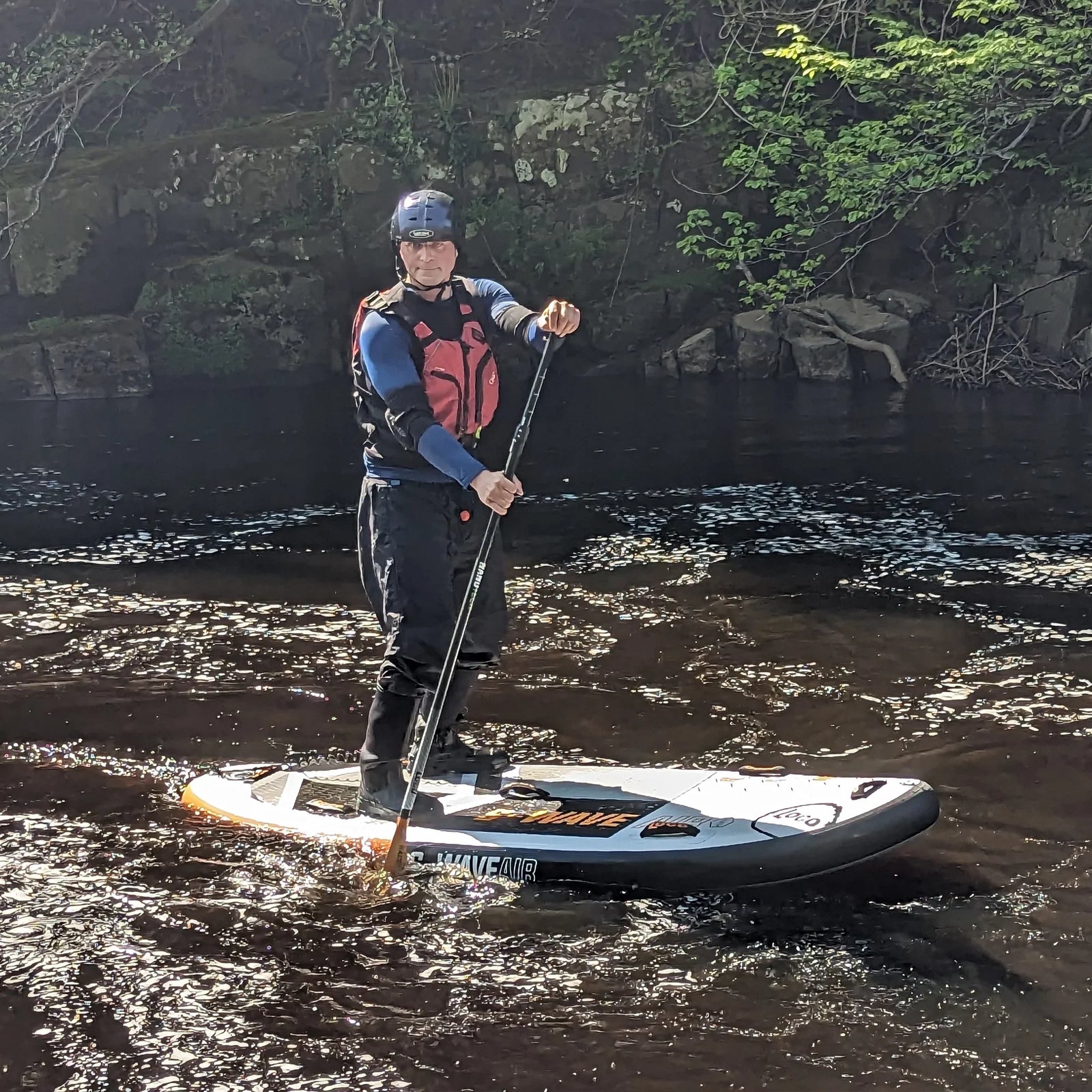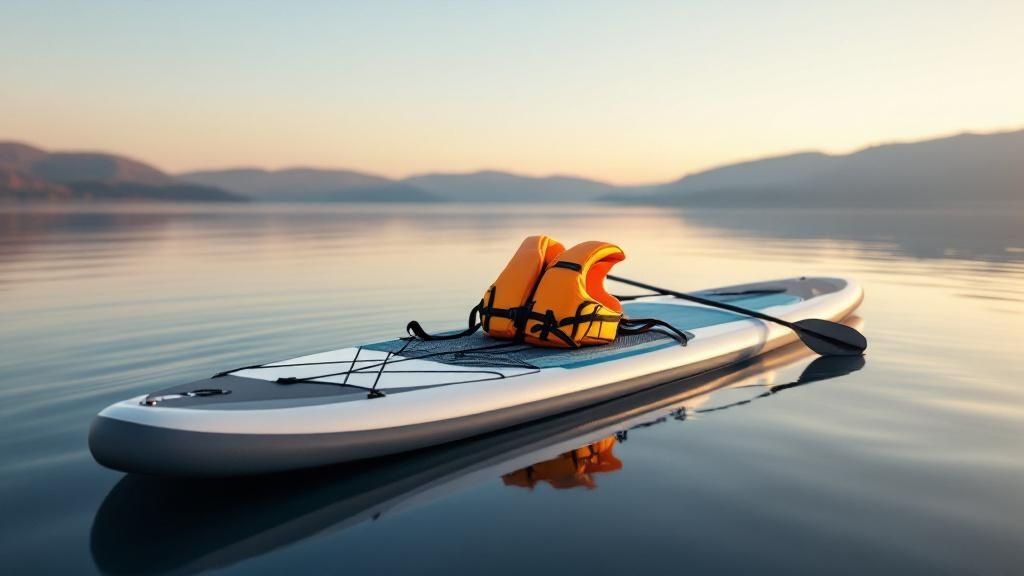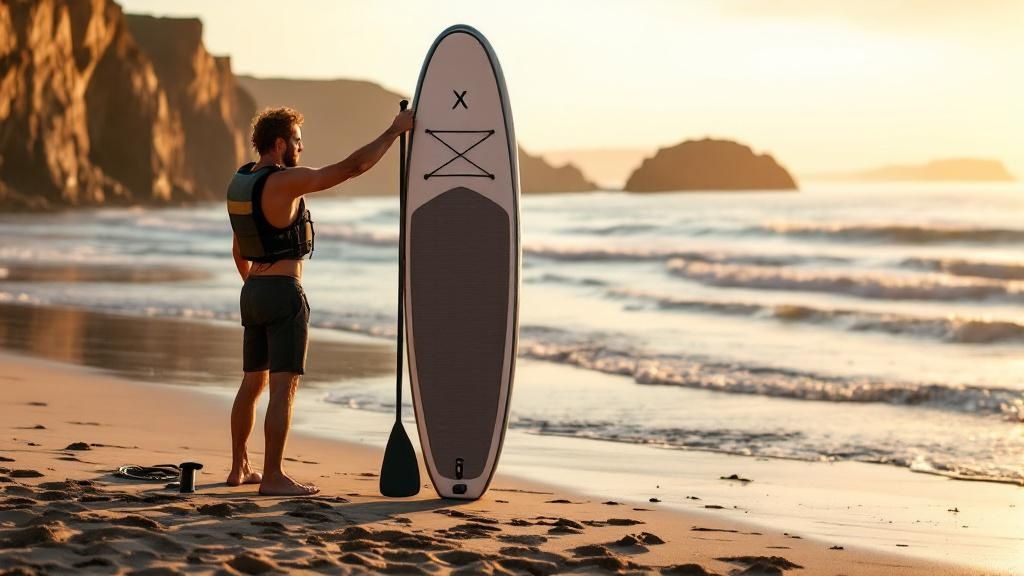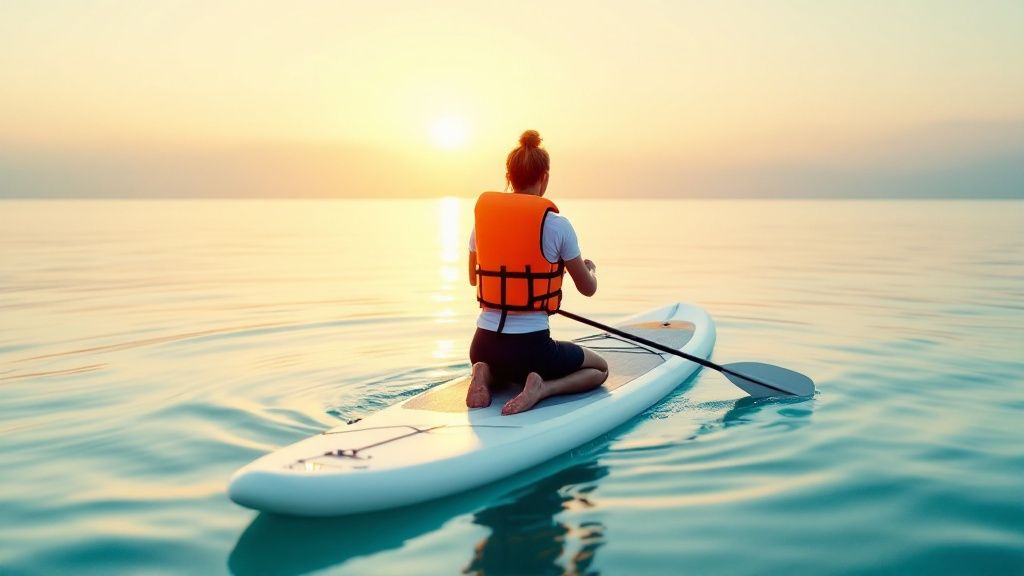How to Paddle Like a Pro: Advanced Techniques for Speed and Efficiency

Paddle Board Introduction
Ever watched an experienced paddler glide effortlessly across the water while you’re huffing and puffing to keep up? Paddling efficiently isn’t just about strength; it’s about technique. Whether you’re looking to increase speed, conserve energy on long-distance trips, or simply refine your paddling style, mastering advanced SUP techniques will take your skills to the next level.
Let’s break down how to paddle like a pro, covering everything from stroke mechanics to paddle board positioning, so you can leave inefficiency in your wake.
The Key to Paddling Like a Pro
A common misconception is that powerful strokes equal speed. In reality, proper form, balance, and technique matter far more than brute force. By refining your paddling method, you can maximize efficiency, reduce fatigue, and improve overall speed.
Perfecting your paddle stroke isn’t just for racers; even casual paddlers benefit from enhanced technique. Whether you’re using an inflatable paddle board or a rigid SUP, these advanced skills apply across the board.
Essential Techniques for Paddle Board Speed and Efficiency
1. Master the Catch Phase The "catch" is the initial phase of each stroke, where the paddle enters the water. A strong catch ensures that your strokes generate maximum propulsion without wasted effort.
-
Plant your paddle fully in the water before applying force.
-
Keep your top hand firm and your bottom arm straight to maximize efficiency.
-
Engage your core rather than relying solely on your arms.
Many beginners make the mistake of dipping the paddle halfway in, losing potential power. Ensure your blade is fully submerged to make every stroke count.
2. Optimize Your Stroke Length and Cadence Shorter, more controlled strokes are often more effective than long, overextended ones. Ideally, your paddle should enter the water near your feet and exit by your hip.
-
A higher cadence (more strokes per minute) leads to better speed and efficiency.
-
Avoid overreaching, which can throw off your balance and waste energy.
Professional paddlers maintain a steady rhythm rather than exerting bursts of power. Consistency beats occasional, forceful strokes every time.
3. Engage Your Core, Not Just Your Arms Your core should be doing most of the work—not your shoulders or biceps. Think of paddling as a full-body movement.
-
Twist your torso as you stroke to generate additional power.
-
Keep your lower body stable, letting your upper body do the work.
-
Imagine pulling yourself past the paddle rather than pulling the paddle through the water.
By engaging the core, you distribute effort across larger muscle groups, reducing strain and fatigue over long distances.
4. Perfect Your Stance and Weight Distribution Where and how you stand on your board impacts your paddling efficiency.
-
Keep your feet shoulder-width apart and knees slightly bent for balance.
-
Shift your weight slightly forward to prevent drag and improve speed.
-
Avoid leaning too far back, which slows you down and makes turning harder.
Racers and endurance paddlers often position themselves slightly forward to minimize resistance and enhance glide.
5. Use the Right Paddle Length and Angle A paddle that’s too short or too long can hinder your performance. Ideally, your paddle should be 6-10 inches taller than your height.
-
Adjust your paddle length depending on your activity (shorter for surfing, longer for distance paddling).
-
Keep your top hand at eye level to maximize power transfer.
-
Angle the blade slightly forward when planting it in the water for an efficient stroke.
Choosing a high-quality, lightweight paddle can also make a noticeable difference in reducing fatigue and improving efficiency.
6. Drafting: The Speed Trick Most Paddlers Ignore Drafting, or riding in another paddler’s wake, can significantly reduce drag and improve speed.
-
Stay just behind another paddler, using their slipstream to glide with less effort.
-
Maintain a steady rhythm to prevent collisions or sudden course corrections.
-
This technique is particularly useful in races or group paddles.
Cyclists use drafting to conserve energy, and the same principle applies to SUP. By reducing resistance, you can maintain speed with less effort.
7. Minimize Inflatable Paddle Board Drag Excess drag slows you down and wastes energy. To keep your board moving smoothly:
-
Ensure your weight is evenly distributed to maintain a flat, streamlined position.
-
Keep your strokes close to the board to reduce unnecessary side-to-side movement.
-
Regularly check your fin for debris or damage, as a faulty fin can create resistance.
Inflatable paddle boards tend to have more drag than hard boards, but using a well-designed fin setup can help counteract this effect.
8. Improve Your SUP Turning Efficiency Quick, controlled turns allow you to maintain momentum rather than losing speed.
-
Use pivot turns (stepping back on the tail of the board and sweeping the paddle) for rapid direction changes.
-
Crossbow turns (reaching across the nose with your paddle) help maintain stability while turning.
-
Practice shifting weight smoothly to avoid sudden, destabilizing movements.
Even if you’re not racing, efficient turning helps you manoeuvre through tight spaces or changing conditions with ease.
9. Adapt Your Paddle Board Technique for Wind and Currents Wind and currents are inevitable, but how you handle them determines whether they work for or against you.
-
Paddle on the opposite side of where the wind is pushing you.
-
Angle your strokes slightly forward into the current rather than fighting against it directly.
-
Lower your stance slightly in strong winds for better stability.
Being mindful of environmental conditions ensures you maintain efficiency even in less-than-ideal conditions.
10. Train Off the Water Land-based training improves strength, endurance, and balance, making paddling easier.
-
Core exercises like planks, Russian twists, and kettlebell swings enhance power.
-
Balance training (using a BOSU ball or balance board) mimics the instability of a SUP.
-
Rowing machine workouts improve paddling endurance and upper body strength.
The more you train off the water, the stronger and more efficient you’ll be when paddling.
Conclusion
Paddling like a pro isn’t about brute strength—it’s about refining your technique, optimizing efficiency, and making small adjustments that yield big results. By focusing on stroke mechanics, core engagement, and proper board handling, you’ll paddle faster, longer, and with less fatigue.
Whether you’re an aspiring racer or just want to cover more distance effortlessly, implementing these techniques will take your SUP skills to the next level.




